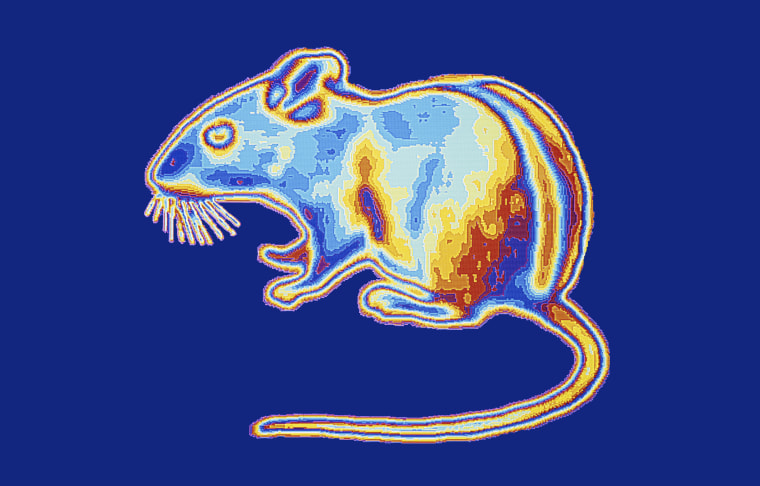No one is ditching the night-vision goggles just yet, but scientists working in the United States and China have developed a technique that they say could one day give humans the ability to see in the dark.
The technique involves injecting the eyes with particles that act like tiny antennae that take infrared light — wavelengths that are invisible to humans and other mammals — and convert it to visible wavelengths. Mammals can see wavelengths in just a sliver of the electromagnetic spectrum, and the new technique is designed to widen that sliver.
The nanoparticle injections haven't been tried on humans, but experiments on mice show that they confer the ability to see infrared light without interfering with the perception of light in the visible range. The effect worked during the day and at night and lasted for several weeks. The rodents were left unharmed once it wore off.
Gang Han, a chemist at the University of Massachusetts Medical School and a co-author of a new paper describing the research, said in a statement that the technique could lead to a better understanding of visual perception and possibly lead to new ways to treat color blindness.
But those are far from the only possible applications if the technique can be made to work safely in other mammals, including humans. In an email to NBC News MACH, Han said it might be possible to use nanoparticle injections to create "superdogs" that could make it easier to apprehend lawbreakers in darkness.
"For ordinary people," he added, "we may also see our sky in a completely different way" both at night and during the day because many celestial objects give off infrared light.
The technique doesn't confer the ability to see the longer-wavelength infrared light given off by living bodies and other warm objects, Tian Xue, a neuroscientist at the University of Science and Technology of China and a co-author of the paper, said in an email. But at least theoretically, it could give humans the ability to see bodies and objects in darkness without the use of night-vision gear — though an infrared light would still be needed.
For their research, Han, Xue and their collaborators injected the rodents' eyes with nanoparticles treated with proteins that helped "glue" the particles to light-sensitive cells in the animals' retinas. Once the tiny antennae were in place, the scientists hypothesized, the nanoparticles would convert infrared light into shorter wavelengths, which the animals would then perceive as green light.
To make sure the mice were actually seeing the converted infrared light, the scientists subjected the animals to a number of tests, including one in which they were given a choice of entering a totally dark box or one illuminated only with infrared light. (Mice are nocturnal, and ordinarily they prefer darkness.) Control animals showed no preference — because both boxes appeared dark to them — while treated mice showed a distinct preference for the dark box.
Other scientists praised the research while expressing doubts about trying the technique in humans.
Harvard neuroscientist Michael Do said in an email that the experiments were "sophisticated" and that the technique was likely to work in humans as well as in mice. But he said it was unclear just how sharp the infrared vision would be in humans, and he cautioned that the injections might damage delicate structures in the eye.
Glen Jeffery, a neuroscientist at the University College London, expressed similar praise for the research — but even graver doubts. "Injecting any material under the retina is risky and should never be done unless there is a clear and justifiable clinical reason..." he said in an email. "I have no idea how you could use this technology to human advantage and would never support its application on healthy humans."
But the researchers are moving ahead. Han said the team planned to test the technique in bigger animals — possibly dogs.

